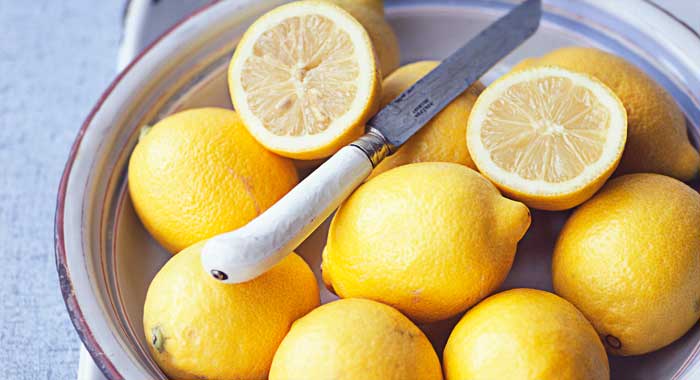
Pronounce it: le-mon
Oval in shape, with a pronouced bulge on one end, lemons are one of the most versatile fruits around, and contain a high level of Vitamin C.
Although the juicy yellow flesh is a little too sour to eat on its own, its citrus fragrance and tartness means it’s wonderful combined with all manner of ingredients and dishes, from the sweet to the savoury. The bright yellow skin can be used as well, when zested. A kitchen essential.
Find out about the health benefits of lemon water with our guide.
Availability
All year round but at their best from January until March.
Choose the best
Look for unblemished, firm lemons that feel heavy for their size and have no tinges of green (which indicates that they’re underripe). Avoid very pale lemons, as they are older, and will contain less juice.
The best lemons for juicing or using for wedges are those with a smooth, thin skin. The best for zesting are those with a thicker, knobbly skin, which tend to be on the large size.
If you intend to use the zest, buy unwaxed lemons (shops should state this clearly). If you can’t find them, scrub the lemons thoroughly before zesting.
Prepare it
To extract the maximum amount of juice, make sure the lemons are at room temperature, and firmly roll them back and forth under your palm a couple of times – that helps to break down some of the flesh’s fibres.
Alternatively, microwave lemons for around 30 seconds, depending on the size of the lemon – warming them up helps them give up more juice.
Store it
In a perforated bag in the fridge (for a couple of weeks); in a fruit bowl (for around a week). Once cut, wrap in clingfilm and keep in the fridge for up to four days.
Cook it
Add the zest to salads, baking or sauces. Use the juice to make salad dressings, lemonade, deglaze a pan or add a couple of drops to water to make acidulated water. Use the flesh and peel in marmalades and preserves.
Alternatives
Try lime.
Be the first to comment on "Lemon"